Chris H
master of boobies
I was almost calling this a buyers guide, trouble is with a buyers guide you need to get a lot of info into a short space, so a rust guide it is then!
The oldest of these cars is now 18 years old, on an F plate, rare to see but theres a couple about.
Even the youngest was made over 10 years ago.
Metal corrodes, no matter what the treatment it will corrode at some point and they do.
Ironically enough the later phase 2 models rust more than the earlier models, despite their thicker metal its of poorer quality so it corrodes easily.
Also what appears on the outside may be hiding dark secrets.
This rather fetching ph1 16V hatch looks quite nice doesn't it?
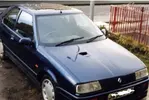
It was a death trap in all honesty.
Anyway,
Lets start at the back, why, well I fancied doing it back to front really.
Chamades, open the boot and look at the corners beside the lights
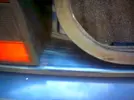
thats what they should like but often theres corrosion here, and its tricky to sort out as well.
heres the hatch version, theres no rust on this one aside from the little spec caused by a scratch
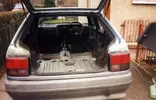
On hatches check for the same thing, the chamades tend to go here more than hatches though.
Boot lids seem to be pretty much rust free aside from where the bolts for the spoiler go, its usually surface rust so clean it up and treat it, it doesn't need to be perfect as its hidden.
Hatches themselves tend to stay rot free apart from where the bottom of the class meets the tailgate itself. The small V shaped channel tends to get small spots of rust, hard to sort and it means the window has to come out to remove all the rust.
Rear arches, this is where every car tends to rust.
1st check where the top of the rear damper passes through into the luggage compartment, these have been know to rot out so the damper pokes through and into the boot space! This requires welding up properly as its loaded, not much but it is when the car bottoms out.
Hose the arches out very thoroughly to help prevent mud trapping moisture in and causing rot.
The lower front corners of the arches tend to go.
This pic shows the bottom corner with the door shut
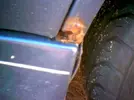
this one is the door open
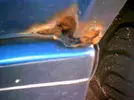
rust is ALWAYS worse than it appears!
The hatch in the 1st pic, this is what it looked like when we set about stripping it
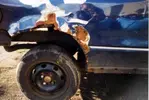
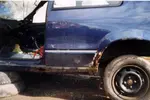
Nice I am sure you'll agree, that was covered by filler, it looked fine from a distance, only when I picked at it then dented the rear panel and large but thin clumps of filler came off did it look like that.
heres some internal pics of the wheel arches to show how extensive the corrosion had become
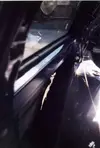
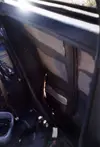
not what you want to see when you remove the rear interior panels!
Next we look at the sills
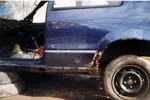
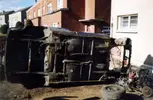
not easy to make out but thats extensive holes, all hidden by the side skirts. The non 16V versions don't tend to suffer here because they are plasticoated and don't rust!
Next inside, on the nearside (passenger side) under the rear seat squab and carpet the cars, all of them tend to rot here
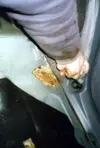
that one is not as bad as some I have seen, in fact some have no metal but a perfectly formed layer of undersealant which is all thats there!
There are 2 drilled holes here and the rot stems from there. Its also enclosed in a box section underneath which doesn't help matters either.
The doors, these are usually ok unless they have been scratches, opening onto kerbs is the usual cause and it causes the bottom lip to rot away. Hinge pins tend to rust in solid, so be warned about them.
Front wings, again very rust resistant, only tend to rust when damaged.
Behind the front wheel arch liners nearest the doors theres a large cavity, this fills up with sand and mud etc, this is also where the sunroof drain channels exit, this fills up with 4 or so inches of mud, this is not to clever, its heavy and it holds moisture right against the metal, so hose this crap out. It can rot the car, not the nice replacable wing but the shell itself!
The roof panel stays clear of corrosion unless again its been damaged.
The chassis rails under the car, they tend to survive ok but some at the back ahead of the rear axle tend to look ok on the outside but if you stick your pinky in and feel around it can be quite corroded, this really needs new metal let in.
At the front, the subframe does rust but its not normally terminal. This is a bolt on bit so if it really comes to it then replace it, Renault sell them but so do euro car parts at a vastly reduced cost. They do split at the front under the radiator, but only small splits and I have yet to see a plain crack through it.
Inner wings tend to be ok as well, towards the front around the headlights they get a bit rusty but if you clean it up and treat it then it wont get any worse.
this pic shows the area around the headlights with the wing removed, a bit rusty but not holed
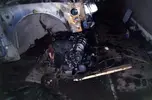
The bonnet. The ph1's last better than the ph2's. The ph2's are not helped by where the bonnet actually ends, direct in line for stones flicked up. This pic shows a ph2 bonnet, this one isn't in to bad a condition


the above pic shows a tatty ph1 bonnet edge, they don't tend to rot away totally like the ph2's do. Usually they last very well.
The bonnet vent, on ph1's this is a fav rust spot, ph2's don't suffer much. The prob with the ph1 is the water leaks in and drains straight into the spark plug wells causing missfires!

that pic shows the leading edge of the vent where it rusts. This is a common problem on ph1 16V's.
All in all the cars are very good at fighting corrosion. You can help them by hosing them down, hosing out the wheel arches and attending to any scratches and chips early.
Applying rustproofing paint/wax does help as well its a messy job but its worth it.
A steam clean of the entire underside of the car is also worth it, but any wax based rust treatments will need to be re-applied. Ask a cab driver where to go as they need to get it done to their vehicles
The oldest of these cars is now 18 years old, on an F plate, rare to see but theres a couple about.
Even the youngest was made over 10 years ago.
Metal corrodes, no matter what the treatment it will corrode at some point and they do.
Ironically enough the later phase 2 models rust more than the earlier models, despite their thicker metal its of poorer quality so it corrodes easily.
Also what appears on the outside may be hiding dark secrets.
This rather fetching ph1 16V hatch looks quite nice doesn't it?

It was a death trap in all honesty.
Anyway,
Lets start at the back, why, well I fancied doing it back to front really.
Chamades, open the boot and look at the corners beside the lights

thats what they should like but often theres corrosion here, and its tricky to sort out as well.
heres the hatch version, theres no rust on this one aside from the little spec caused by a scratch

On hatches check for the same thing, the chamades tend to go here more than hatches though.
Boot lids seem to be pretty much rust free aside from where the bolts for the spoiler go, its usually surface rust so clean it up and treat it, it doesn't need to be perfect as its hidden.
Hatches themselves tend to stay rot free apart from where the bottom of the class meets the tailgate itself. The small V shaped channel tends to get small spots of rust, hard to sort and it means the window has to come out to remove all the rust.
Rear arches, this is where every car tends to rust.
1st check where the top of the rear damper passes through into the luggage compartment, these have been know to rot out so the damper pokes through and into the boot space! This requires welding up properly as its loaded, not much but it is when the car bottoms out.
Hose the arches out very thoroughly to help prevent mud trapping moisture in and causing rot.
The lower front corners of the arches tend to go.
This pic shows the bottom corner with the door shut

this one is the door open

rust is ALWAYS worse than it appears!
The hatch in the 1st pic, this is what it looked like when we set about stripping it


Nice I am sure you'll agree, that was covered by filler, it looked fine from a distance, only when I picked at it then dented the rear panel and large but thin clumps of filler came off did it look like that.
heres some internal pics of the wheel arches to show how extensive the corrosion had become


not what you want to see when you remove the rear interior panels!
Next we look at the sills


not easy to make out but thats extensive holes, all hidden by the side skirts. The non 16V versions don't tend to suffer here because they are plasticoated and don't rust!
Next inside, on the nearside (passenger side) under the rear seat squab and carpet the cars, all of them tend to rot here

that one is not as bad as some I have seen, in fact some have no metal but a perfectly formed layer of undersealant which is all thats there!
There are 2 drilled holes here and the rot stems from there. Its also enclosed in a box section underneath which doesn't help matters either.
The doors, these are usually ok unless they have been scratches, opening onto kerbs is the usual cause and it causes the bottom lip to rot away. Hinge pins tend to rust in solid, so be warned about them.
Front wings, again very rust resistant, only tend to rust when damaged.
Behind the front wheel arch liners nearest the doors theres a large cavity, this fills up with sand and mud etc, this is also where the sunroof drain channels exit, this fills up with 4 or so inches of mud, this is not to clever, its heavy and it holds moisture right against the metal, so hose this crap out. It can rot the car, not the nice replacable wing but the shell itself!
The roof panel stays clear of corrosion unless again its been damaged.
The chassis rails under the car, they tend to survive ok but some at the back ahead of the rear axle tend to look ok on the outside but if you stick your pinky in and feel around it can be quite corroded, this really needs new metal let in.
At the front, the subframe does rust but its not normally terminal. This is a bolt on bit so if it really comes to it then replace it, Renault sell them but so do euro car parts at a vastly reduced cost. They do split at the front under the radiator, but only small splits and I have yet to see a plain crack through it.
Inner wings tend to be ok as well, towards the front around the headlights they get a bit rusty but if you clean it up and treat it then it wont get any worse.
this pic shows the area around the headlights with the wing removed, a bit rusty but not holed

The bonnet. The ph1's last better than the ph2's. The ph2's are not helped by where the bonnet actually ends, direct in line for stones flicked up. This pic shows a ph2 bonnet, this one isn't in to bad a condition


the above pic shows a tatty ph1 bonnet edge, they don't tend to rot away totally like the ph2's do. Usually they last very well.
The bonnet vent, on ph1's this is a fav rust spot, ph2's don't suffer much. The prob with the ph1 is the water leaks in and drains straight into the spark plug wells causing missfires!

that pic shows the leading edge of the vent where it rusts. This is a common problem on ph1 16V's.
All in all the cars are very good at fighting corrosion. You can help them by hosing them down, hosing out the wheel arches and attending to any scratches and chips early.
Applying rustproofing paint/wax does help as well its a messy job but its worth it.
A steam clean of the entire underside of the car is also worth it, but any wax based rust treatments will need to be re-applied. Ask a cab driver where to go as they need to get it done to their vehicles
Last edited by a moderator:

